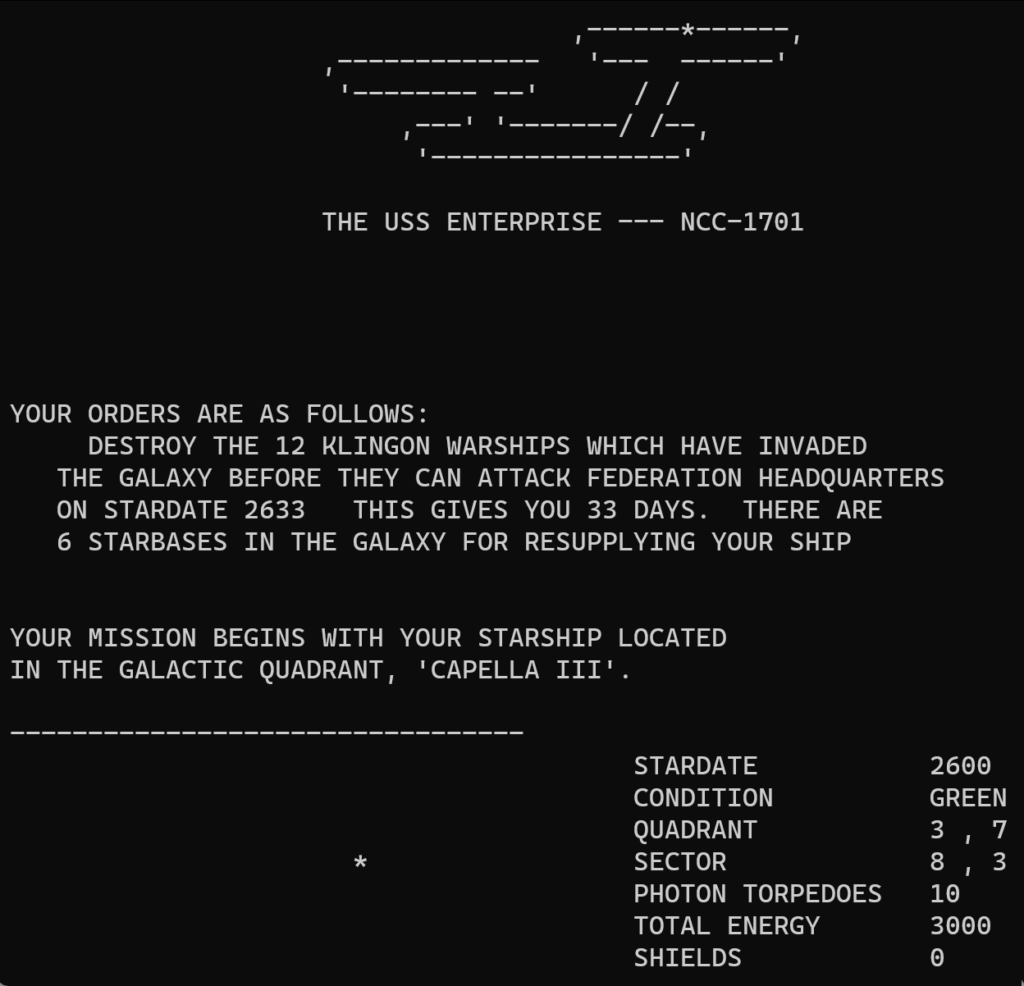When we talk about the old days in computers, there’s easily several eras we could be talking about. There are people who consider the Wii/PS3 era to be the Ancient Times, for after all they were both released in 2006, 17 years ago. They’re almost old enough to drive!
I consider the “modern era” of gaming to have begun with the Dreamcast/Playstation 2/Gamecube era, for in my view that was when, with skilled art design and coding, and modest requirements, one could reasonably generate a realistic scene. Take a look at Crazy Taxi and Soulcalibur on the Dreamcast, both have graphics that seem a little simple now but easily hold up, while the Nintendo 64/Playstation generation has to cut too many corners with their 3D graphics generally.
You can from there go back through the generations: the 16-bit era, the NES/SMS era, then the Atari VCS/Intellivision/Odyssey2/Colecovision era. There’s also the era of home microcomputers, Apple IIs, Commodore 64s and Atari 8-bits, among others, a time that really has no comparison before or since.
But even that wasn’t the beginning of computer gaming. Know, oh prince, that between the years when the oceans drank Atari and the gleaming manufacturers, there was an age undreamed of, when shining timeshare systems lay spread across the world like Big Blue mantles beneath the stars. That was when computing may well have not even meant using a monitor, but instead entering data through a kind of typewriter, with your text appearing on paper, and the machine’s output would also appear on that paper. While that was a time where computing was still new and expensive, and people rented time on big mainframe machines with, at the time, ludicrous resources. The IBM System/370 Model 145 had 500 whole kilobytes of memory, and 255 megabytes of disk space. Such a machine would be partitioned out to many users, who each had accounts on it, and would be served by the processor concurrently. And they liked it!

And before even teletype machines, there were punchcard systems, and the oscilloscope screen on which Tennis For Two was played, but for this post that’s going back a little too far.
This was the time in which David Ahl’s book, BASIC Computer Games*, appeared on store shelves. It was first published in 1973. When I was younger I had a copy of it, given to me by a relative, but it was already a relic by then. I once spotted it on a store shelf, gamely offered for sale despite it being probably around 1991 at the time, a good lifespan in a genre of book nowadays considered disposable. Remember, Pong debuted at Al Capp’s Bar in 1972**. There was a thriving culture of computer gaming even before the first commercial video games were sold.
(* Note 1: While it’s often forgotten now, BASIC is properly written with capital letters. It’s an acronym that stands for Beginner’s All-purpose Symbolic Instruction Code. That’s not as tortured as, say, “GNU’s Not Unix.”)
(** Note 2: Pong wasn’t the first commercial video game. That was likely the Odyssey, or Nutting Associates’ Computer Space. I don’t want to get into it here. This comment is here largely to satisfy my own obsessive/compulsiveness.)

BASIC Computer Games, and its sequels More BASIC Computer Games and Big Computer Games, record, as program listings, a couple hundred old computer games and other entertainments much as they existed at the time, which makes it an incredibly important book for software preservation and computer historians, I’d think anyway. It has listings for a version of the “Star Trek” text game that was popular at the time, and that even once inspired a vectorscan arcade game from Sega, as well as a good number of other amusements.
I say game design doesn’t go obsolete, but it’s true that current expectations of what computer programs should do, let alone games, are not met well by the programs in the books. Still, they can be fun to interact with, for a while at least, and a project exists on Github to update all of the programs to a variety of current (I refuse to say modern) programming languages.
You can also obtain the software in .bas files compatible with Vintage BASIC, a reimplementation of classic Microsoft BASIC for current OSes including Windows, Mac and Linux.
PDF of Basic Computer Games (annarchive.com)
Compilation of programs from BASIC Computer Games converted to current languages (github)
